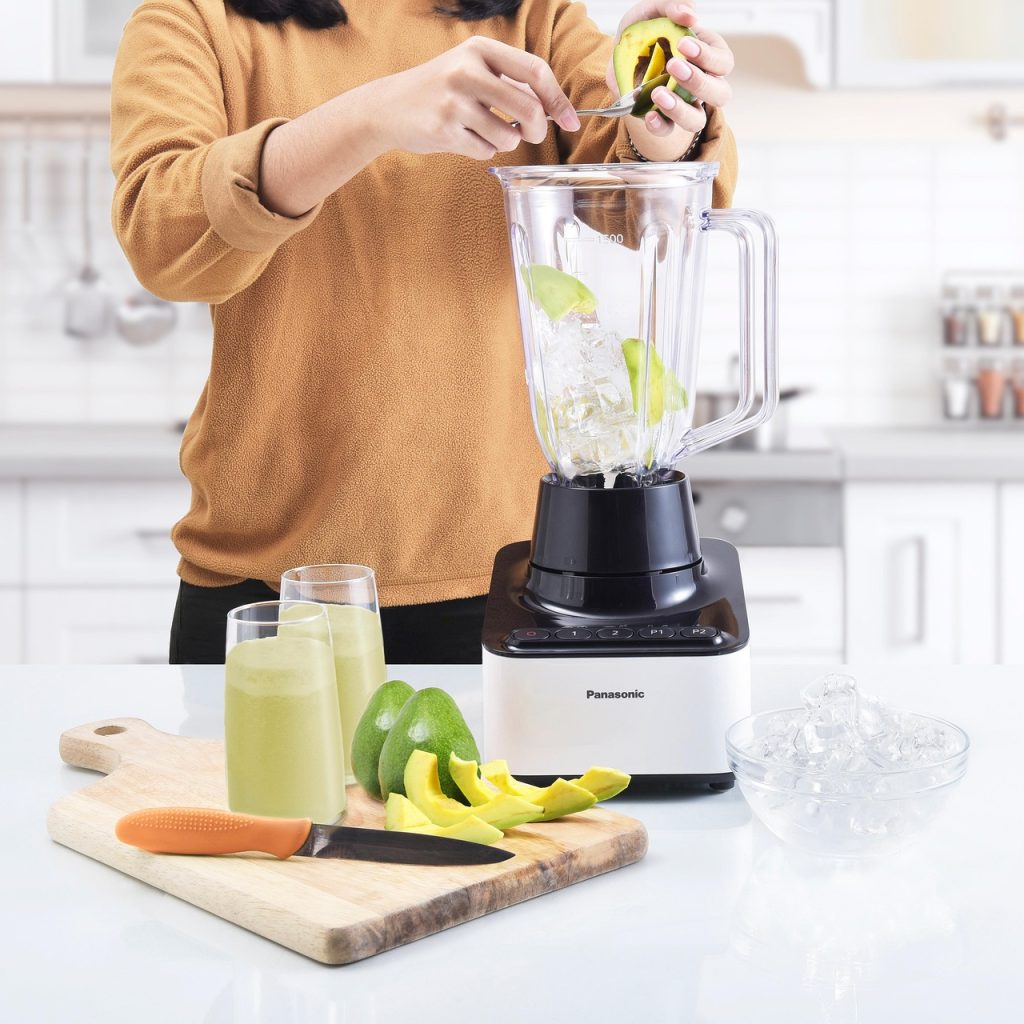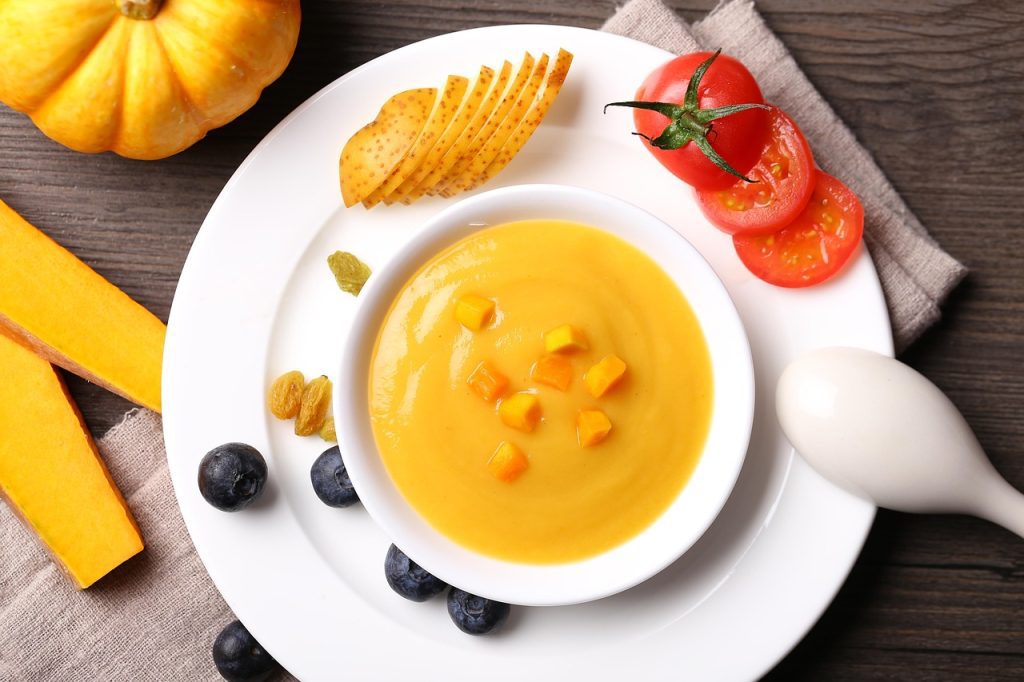Did you know that malnutrition is surprisingly common among seniors, often leading to declining health?
Whether it’s due to swallowing difficulties (dysphagia), dental problems, or other health issues, many older adults struggle with eating regular foods. In fact, these challenges can make mealtimes frustrating and potentially dangerous, causing some seniors to avoid eating altogether.
That’s why soft food recipes for seniors are essential for maintaining proper nutrition and health. These specially prepared meals make eating easier and safer for older adults who have trouble chewing or swallowing regular foods.
We’ll show you how to prepare delicious, nutritious soft foods that are easy to eat while maintaining their flavor and appeal. From proper food consistency to simple preparation techniques, this guide will help you create meals that are both satisfying and safe for seniors with eating difficulties.
Understanding Why Seniors Need Soft Foods
Many seniors experience physical changes that significantly affect their ability to eat regular foods. The prevalence of swallowing difficulties increases dramatically with age, affecting 10-20% of individuals older than 65 years. This percentage rises even further among those with specific health conditions, particularly neurological disorders.
Common Swallowing Difficulties in Seniors
Swallowing problems, or dysphagia, represent a serious health concern for older adults. Dysphagia can lead to severe complications including weight loss, pneumonia, dehydration, shortened life expectancy, and reduced quality of life. Although not a disease itself, dysphagia results from various medical conditions commonly seen in seniors.
Certain conditions dramatically increase the risk of swallowing difficulties:
- Stroke (affects one-third of all stroke patients)
- Parkinson’s disease (impacts 60% of patients)
- Alzheimer’s disease and other forms of dementia (affects 84-93% of people with moderate to severe Alzheimer’s)
- Head and neck cancer
- Amyotrophic lateral sclerosis (ALS)
Furthermore, seniors face a shocking seven times higher risk for choking on food than children aged 1-4 years. This elevated risk makes soft food recipes for elderly particularly important for safety.
Dental Issues That Affect Eating
Dental health plays a critical role in a senior’s ability to eat properly. Poor dental status is strongly associated with malnutrition in elderly individuals. Missing teeth, ill-fitting dentures, and general dental problems make chewing difficult or impossible, forcing many seniors to avoid certain nutritious foods.
Dental impairment specifically leads to reduced intake of vitamins, calcium, dietary fiber, and protein. Without adequate dentition, seniors cannot properly prepare food for digestion, which consequently affects their overall nutritional status. Moreover, a high correlation exists between absent teeth, ill-fitting dentures, dental disease and sudden choking deaths.
How Aging Changes Eating Abilities
Beyond specific medical conditions and dental issues, normal aging itself brings changes that affect eating ability. Sarcopenia—the decreased muscle mass and quality that comes with advancing age—affects the muscles used for swallowing. Additionally, aging results in:
- Reduced tongue strength and pressure generation
- Slower, less efficient chewing muscles
- Lower salivary flow rates leading to dry mouth
- Decreased sense of smell and taste
- Reduced sensitivity in the vocal cords that protect the airway
- Longer swallowing time (approximately 20% longer than in younger adults)
Many medications commonly prescribed to seniors can exacerbate these issues by causing decreased appetite, incoordination, and esophagitis.
Considering these challenges, soft food ideas for elderly become essential rather than optional. When preparing soft foods to eat for dinner or any meal, understanding these specific difficulties helps create recipes that address not just texture, but also taste, moisture content, and nutritional density—all critical factors for seniors with eating difficulties.
Essential Kitchen Tools for Preparing Soft Foods

Having the right kitchen equipment makes all the difference when preparing nutritious soft foods for seniors. The proper tools not only save time but also help achieve the ideal textures needed for safe, appealing meals.
Blenders and Food Processors: Finding the Right One
When preparing soft food recipes for seniors, a quality blender or food processor becomes your most valuable kitchen ally. These versatile appliances can quickly transform regular meals into easy-to-swallow versions while maintaining nutritional value.
For most households preparing soft foods, a food processor with a 13-14 cup capacity provides ideal versatility. What makes food processors particularly valuable is their ability to process at slower speeds than blenders, giving greater control over texture. When selecting a processor, look for:
- Sharp, durable blades that remain effective over years of use
- A strong motor with a heavy base that won’t move during operation
- Easy-to-clean components (especially important for frequent use)
Alternatively, immersion blenders offer unique advantages for soft food preparation. These handheld devices can purée foods directly in cooking pots, making them exceptionally convenient for small batches or single servings. Many caregivers find immersion blenders particularly useful for modifying regular meals at restaurants or during travel, as some rechargeable models are portable enough to carry in a bag.
Importantly, when selecting any blender, consider both power and capacity. High-powered models with at least 14 cups capacity work best for families preparing multiple servings, whereas personal-sized blenders may suffice for individual meals.
Specialized Utensils That Make Preparation Easier
Beyond blenders, several specialized tools make soft food preparation significantly easier. A quality potato masher with a long handle keeps hands away from hot foods while providing the pressure needed for perfectly mashed vegetables.
For seniors who still maintain some independence with eating, adaptive utensils deserve consideration. These specialized tools feature:
- Built-up handles for easier gripping
- Weighted designs to reduce hand tremors
- Bendable portions to accommodate different angles
Food mills and meat grinders serve as excellent alternatives for creating texture-modified foods when more specialized equipment isn’t available. Additionally, garlic twisters and cherry pitters—while seemingly niche—can dramatically reduce prep time for flavorful soft foods.
Storage Solutions for Batch Cooking
Batch cooking saves considerable time when preparing soft foods for elderly individuals, especially those with swallowing issues. Proper storage containers become essential in this process.
High-quality glass containers with airtight, leakproof lids offer several advantages for storing soft foods:
- Durability (withstanding temperatures from freezer to oven)
- Odor resistance (preventing flavor transfer between foods)
- Visibility (easily identifying contents)
For maximum organization, select container sets with multiple sizes that nest when not in use. This approach optimizes kitchen space while providing appropriate portions for different meals.
When freezing soft foods, consider how the food will be reheated. Many newer freezer-to-oven glass containers allow you to transfer food directly from freezer to oven without defrosting, saving valuable time when preparing soft foods to eat for dinner.
Through careful selection of these essential tools, preparing nutritious, appealing soft food recipes for elderly family members becomes significantly more manageable, ensuring they receive the nutrition they need despite swallowing or dental challenges.
Basic Techniques for Modifying Food Textures
Creating texture-modified foods requires mastering a few fundamental techniques that make meals both safe and enjoyable. Food texture modification is essential for the estimated 15-22% of adults over 65 who experience some form of swallowing difficulty. With proper techniques, caregivers can transform regular meals into appropriate soft food recipes for seniors.
Pureeing Methods for Different Food Types
Pureeing involves transforming solid foods into smooth, consistent textures without lumps. The process varies slightly depending on the food type:
For meats and proteins:
- Cook thoroughly until tender (slow cooking or pressure cooking works best)
- Refrigerate for at least 2 hours to firm the texture
- Chop into 1-inch pieces before processing
- Puree until fine, then add liquid gradually (½ cup per cup of meat)
For vegetables and fruits, the approach differs slightly. First, cook until soft enough to be easily mashed with a fork. Then, puree with small amounts of cooking liquid until reaching a smooth consistency. For starch-heavy foods like potatoes or rice, adding warm milk or broth creates creamier textures than water alone.
Mashing vs. Blending: When to Use Each
Mashing and blending serve different purposes for creating soft foods for seniors with swallowing issues. Mashing produces a coarser texture with some small, soft lumps remaining—perfect for seniors who still have some chewing ability. This technique works best for naturally soft foods like:
- Well-cooked potatoes and squash
- Ripe bananas and avocados
- Soft cooked beans
Conversely, blending creates completely smooth textures without any lumps, suitable for those with more severe dysphagia. According to texture modification guidelines, pureed foods should be smooth enough to hold their shape on a spoon yet fall off when the spoon is tilted. Blending is essential for fibrous vegetables, meats, and foods with multiple ingredients that need to be uniformly smooth.
Adding Moisture Without Sacrificing Flavor
Moisture is crucial for easier swallowing, yet simply adding water can dilute flavor. Instead, consider these flavor-enhancing moisture sources:
- Meat or vegetable broths for savory dishes
- Gravy or cream-based sauces for added calories and flavor
- Milk, half-and-half, or cream for increased protein and calories
- Fruit juices for sweetening while adding nutrients
For maximum nutrition, avoid using water as the primary liquid in soft food recipes for elderly. Instead, choose liquids that enhance nutritional content—milk, broth, or vegetable juices provide both moisture and nutrients. For instance, adding 2-4 tablespoons of coconut milk to smoothies or cereals increases both calories and flavor while improving moisture.
Thickening Liquids Safely
For seniors with dysphagia, thin liquids pose a significant aspiration risk. Thickened liquids move more slowly through the throat, giving more time for proper swallowing. Three standardized thickness levels are commonly used:
- Nectar-thick (51-350 cP): Similar to tomato juice consistency
- Honey-thick (351-1750 cP): Flows slowly through fork prongs
- Pudding-thick (>1750 cP): Holds shape on a fork
Commercial thickeners like Thick & Easy, Thick-It, and Simply Thick are available at pharmacies and offer consistent results. However, natural thickening agents like pureed fruits, baby cereals, or instant potato flakes can also be effective for easy to swallow recipes for elderly.
When thickening liquids, measure carefully and stir thoroughly to avoid clumps. Importantly, avoid using ice cubes in thickened beverages, as melting changes consistency. Instead, freeze pre-thickened water into ice cubes when cold drinks are desired.
Step-by-Step Soft Food Recipes for Dinner

Preparing nutritious dinner options becomes simpler once you master a few key soft food recipes for seniors. These meals can be both delicious and easy to eat, ensuring proper nutrition without sacrificing flavor.
Protein-Rich Main Dishes
Protein is essential for seniors, yet many protein sources can be challenging to chew. Fortunately, I’ve found several approaches that work well for creating tender, protein-packed main courses.
Eggs stand out as the “perfect protein” for soft diets—a single large egg provides approximately 6 grams of high-quality protein plus essential nutrients. I recommend preparing soft scrambled eggs with herbs and cheese for a quick dinner option. Similarly, egg bakes combining spinach, bacon, and feta make excellent make-ahead meals suitable for any time of day.
For meat-based options, consider these preparation methods:
- Slow-cook meats until fork-tender, then shred or ground
- Use gravy or sauce to add moisture (essential for easier swallowing)
- Prepare casseroles that incorporate protein in a soft matrix
Twice-baked potato casserole offers a fantastic make-ahead option requiring minimal preparation. For those who enjoy Indian cuisine, matar paneer provides a soft, satisfying alternative—the paneer cheese requires almost no chewing while delivering excellent protein.
Vegetable Side Dishes That Maintain Nutrients
When creating vegetable side dishes for seniors with chewing difficulties, proper cooking techniques maintain both nutrients and flavor. Mashed sweet potatoes with silken tofu create a protein-boosted side dish that’s remarkably easy to swallow.
Roasted vegetables can be transformed into soft sides through proper preparation. After roasting, vegetables develop tender, caramelized exteriors that practically melt in the mouth. Subsequently, they can be mashed or pureed if needed. Cauliflower, squash, and carrots respond exceptionally well to this method.
For maintaining maximum nutrients in green vegetables, I prefer steaming briefly then pureeing with a small amount of broth. This creates a nutrient-dense side that pairs well with most protein dishes. Essentially, sautéed green beans with pomegranates offer both nutritional value and visual appeal while remaining soft enough for seniors to enjoy.
Finally, soup makes an excellent vehicle for vegetables. Creamy vegetable soups blend nutrition with easy-to-swallow consistency—perfect for seniors with swallowing issues. Even better, these soups freeze well, making them ideal for batch preparation.
Converting Family Favorites to Easy-to-Swallow Versions
Many families hesitate to prepare separate meals for seniors with swallowing or chewing difficulties. Fortunately, transforming familiar recipes into soft versions doesn’t mean sacrificing the flavor everyone loves.
Adapting Texture While Preserving Flavor
Texture modification is crucial for seniors with dysphagia, yet bland taste and unappealing appearance often cause these adapted diets to fail. Indeed, as food texture is lost through grinding and pureeing, the taste naturally changes. Gravies or sauces added for moisture may alter the original flavor profile.
To preserve flavor while changing texture:
- Enhance natural flavors with appropriate seasonings—add a dash of salt to meats or a little sweetener to vegetables
- Serve hot foods hot and cold foods cold to maximize taste perception
- Use food molds to transform pureed foods into visually appealing shapes
- Incorporate herbs, spices, and aromatics to elevate flavor profiles
Simple Substitutions for Hard-to-Chew Ingredients
For seniors with limited chewing ability, certain ingredients need replacement. Effective substitutions include:
- Replace nuts with smooth nut butters for protein and flavor
- Substitute raw vegetables with well-cooked, pureed versions
- Exchange tough meats with flaked fish, ground meats, or soft tofu
- Replace crusty breads with soft, crustless versions
- Use soft cheeses like cottage cheese or ricotta instead of hard varieties
Making One Meal Work for Everyone
Preparing separate meals creates unnecessary work. Above all, focus on creating a base meal that works for everyone, then modify portions as needed. For instance, shepherd’s pie works exceptionally well—the meat filling can be made tender enough for most seniors while remaining tasty for others.
For family-style dining:
- Cook proteins until fork-tender for everyone
- Set aside portions to be further modified before adding final textures
- Use the same seasoning profile across all versions of the dish
This approach respects seniors’ dignity by providing visually similar meals to what others are eating, which research shows significantly increases willingness to eat among those requiring texture-modified diets.
Conclusion
Preparing soft foods for seniors requires understanding, patience, and the right techniques. Through my experience, I’ve found that successful meal preparation comes down to three key elements: proper tools, correct food modification methods, and creative approaches to maintain flavor.
Seniors deserve nutritious, appealing meals regardless of their eating challenges. Rather than viewing soft food preparation as an obstacle, we should see it as an opportunity to show care through thoughtfully prepared dishes that meet their specific needs.
Starting with simple recipes and gradually expanding your repertoire will help build confidence in preparing texture-modified foods. Remember, the goal extends beyond just making food easier to eat – it’s about ensuring seniors receive proper nutrition while still enjoying their meals.
Most importantly, adapting familiar recipes helps maintain the joy of eating, which plays a crucial role in seniors’ overall well-being. Armed with these techniques and understanding, you can create delicious, safe meals that seniors will look forward to eating each day.




